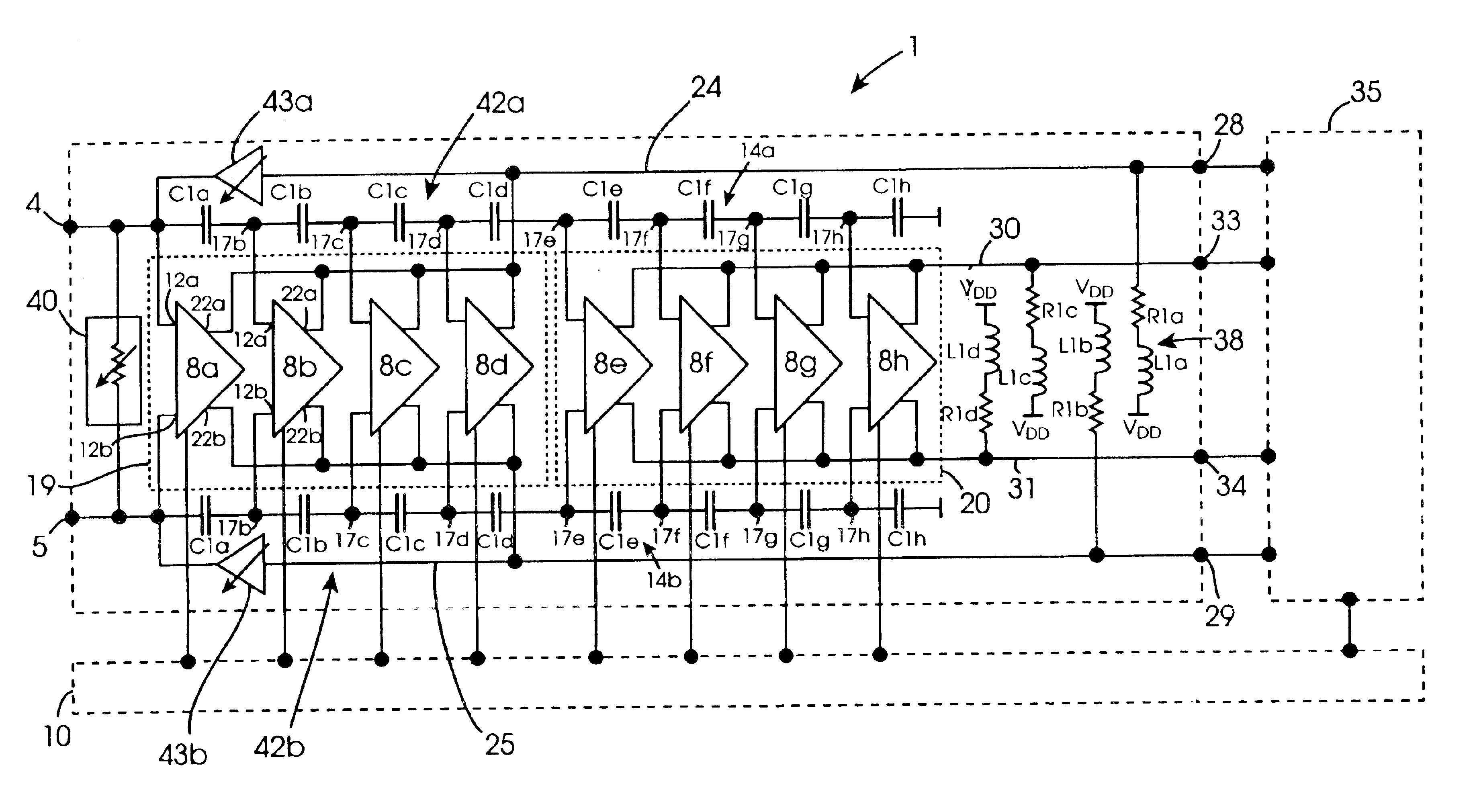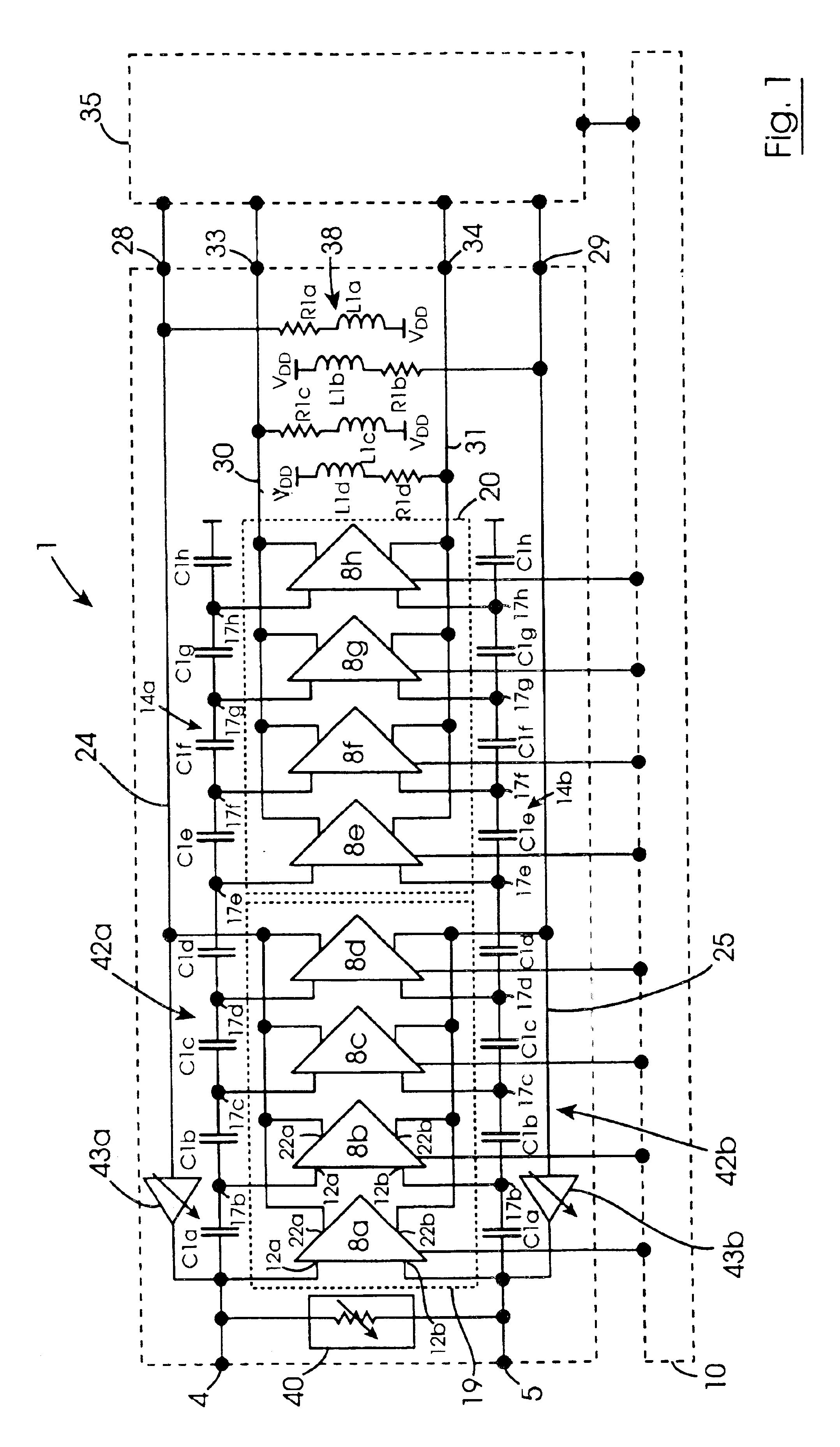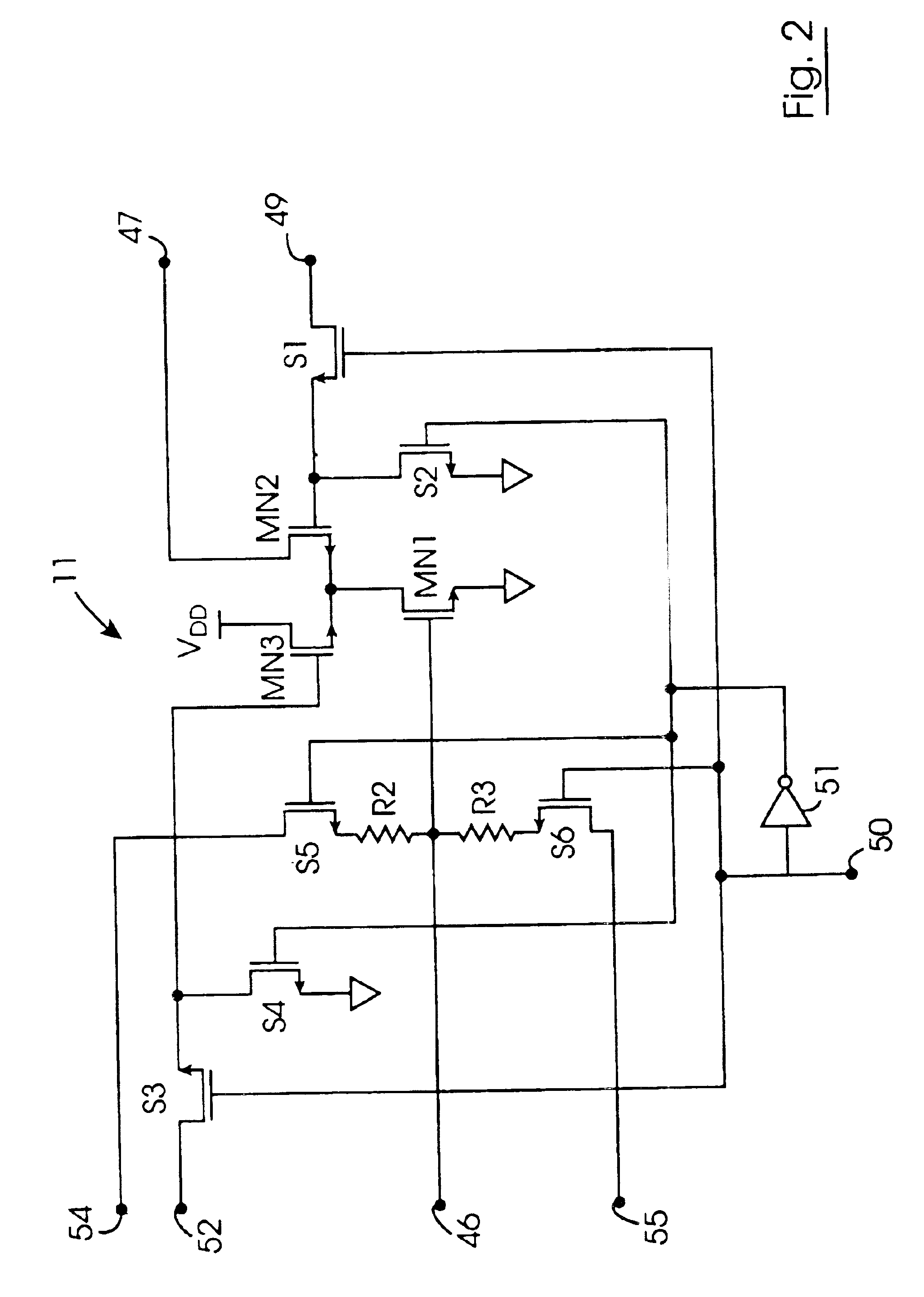Variable gain amplifier
a variable gain amplifier and amplifier technology, applied in amplifier combinations, automatic tone/bandwidth control, gain control, etc., can solve the problems of high power requirement, inability to easily integrate, and inability to fully integrate single chip receivers, etc., to achieve good impedance matching, good noise performance, and the effect of reducing the gain of the variable gain amplifier
- Summary
- Abstract
- Description
- Claims
- Application Information
AI Technical Summary
Benefits of technology
Problems solved by technology
Method used
Image
Examples
Embodiment Construction
Referring to the drawings and initially to FIG. 1, there is illustrated a broadband radio frequency differential variable gain multi-stage amplifier according to the invention, indicated generally by the reference numeral 1. The variable gain amplifier 1 is an amplifier with low noise characteristics, and is particularly suitable for amplifying digital television signals from an antenna and / or a communal cable system. Prior to being applied to the variable gain amplifier 1, the signals from the antenna and / or cable system are filtered by a band selection filter (not shown) and are converted into a differential form in order to maintain symmetry to ground.
The variable gain amplifier 1 comprises a pair of differential input terminals, namely, a positive main input terminal 4, and a negative main input terminal 5 for receiving the respective positive and negative ends of the differential signal from the band selection filter (not shown). N identical gain stages, in this embodiment of t...
PUM
 Login to View More
Login to View More Abstract
Description
Claims
Application Information
 Login to View More
Login to View More - R&D
- Intellectual Property
- Life Sciences
- Materials
- Tech Scout
- Unparalleled Data Quality
- Higher Quality Content
- 60% Fewer Hallucinations
Browse by: Latest US Patents, China's latest patents, Technical Efficacy Thesaurus, Application Domain, Technology Topic, Popular Technical Reports.
© 2025 PatSnap. All rights reserved.Legal|Privacy policy|Modern Slavery Act Transparency Statement|Sitemap|About US| Contact US: help@patsnap.com



